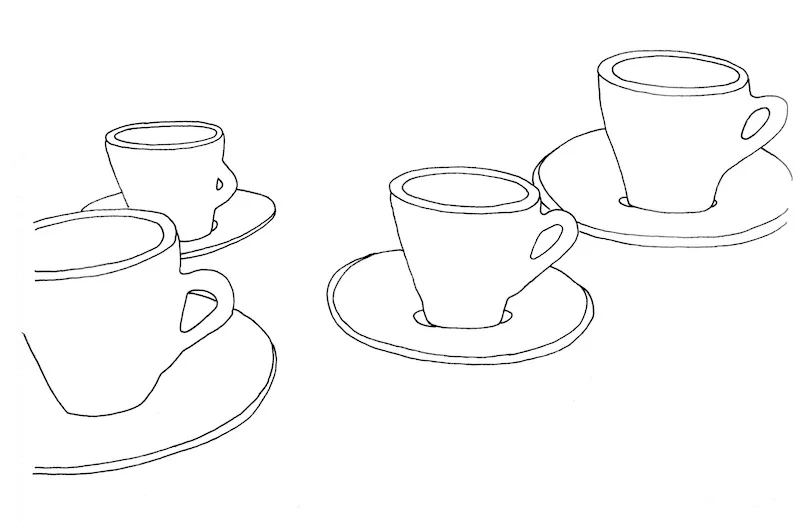Whatever Happened to the After-Dinner Demitasse?
A look at a bygone tradition
Ask any sexagenarian about the after-dinner demitasse, and reminiscences of a ritual gone-dry will resurface.
Just a few generations ago, an evening coffee was as habitual as the mandatory cup one had upon waking. "Today, all classes in the United States begin and end the day with coffee." So asserts William Ukers in his 1936 opus, All About Coffee.
“...coffee is not a postscript to dinner, but rather an essential part of the best and heartiest meals…”
Café Noir is the term many cookbooks written in the 1800s and early 1900s call the after-dinner drink. Prior to coffeemakers, nearly every cookbook included recipes for several brew methods, and the after-dinner coffee was to be twice the concentration as the morning cup. What saved the drinker from insomnia was the demitasse—a petite ceramic cup (with a saucer)—in which the coffee was served. One early American bestseller, Mrs. Lincoln’s Boston Cook Book, first published in 1884, wrote that café noir "should be very strong and perfectly clear; served in small cups, with block sugar if desired, but not with cream or milk, as the milk counteracts the purpose for which the coffee is taken."
Illustration by Michelle Ott
Though an after-dinner coffee was common to folks across the country, it seems that etiquette compelled upper-class families to retire to the sitting room for their demitasse, rather than drinking it at the table. One grandfatherly figure we recently spoke to recalls that the sitting room housed the television, and it was only once the coffee was served—after the dessert—that the children could finally turn on the TV.
In a 1951 New York Times column about the drink, Jane Nickerson says the question is never "'Shall we have coffee?' But rather, 'How shall it be served?'" Her article goes on to weigh the options: coffee, by itself, or with brandy or liqueur, "either sipped alternately or together" in one cup. If in the mood for pyrotechnics, she recommends the café royal, where brandy is first added to a cup of coffee, and then a teaspoon—in which a lump of sugar and a few more drops of brandy sits—is lit with a match. The finale comes when the fiery spoon is lowered into the coffee, at which point the entire surface becomes alight in flame.
The last search that we could find in the Times for 'after-dinner coffee' as a stand-alone subject was a 1988 article, where the writer, Olivier Bernier recommends that the host consider "if a new vein of gossip has just been tapped, will it be encouraged by an invigorating cup of coffee, or... will the mood be mellowed by a rare Armagnac?"
Indeed, perhaps just a few decades ago, black coffee at the end of a night not only signaled the meal’s conclusion, but helped to spark a lively conversation when there was no Internet, or on-demand movies, to be had.
Whatever the reason, we like the arc of a meal that begins with salty olives and ends with a bittersweet café noir. As famed cookbook author Fanny Farmer wrote in 1896, "after-dinner coffee retards gastric digestion; but where the stomach has been overtaxed by a hearty meal, it may prove beneficial, so great are its stimulating effects."
If you, like many, swear off caffeine past late afternoon, weary of the next day’s commute, then we recommend trying our Night Light Decaf for your next café noir. Maybe that's the how the demitasse can reclaim its rightful place in the evening meal.


